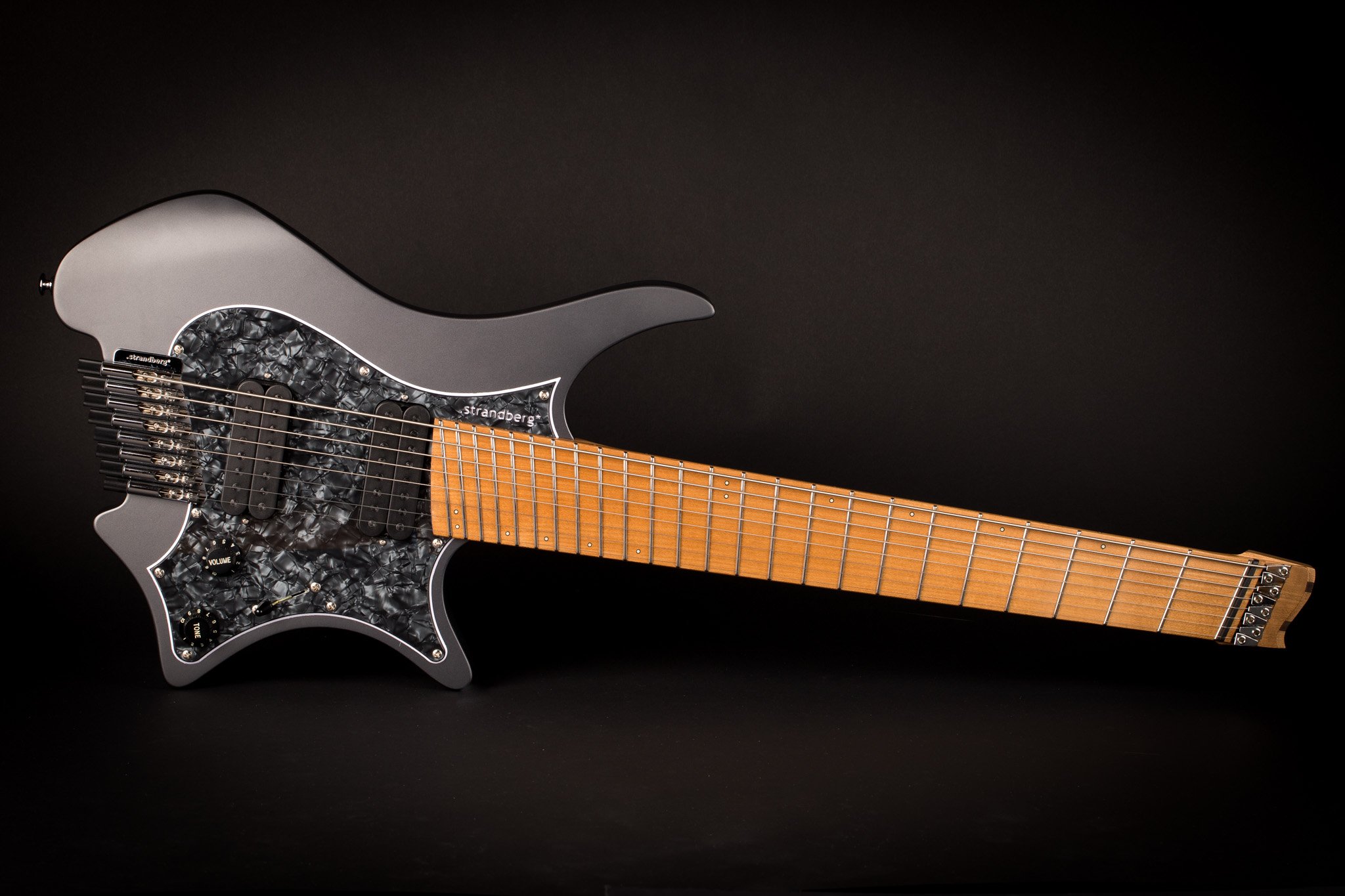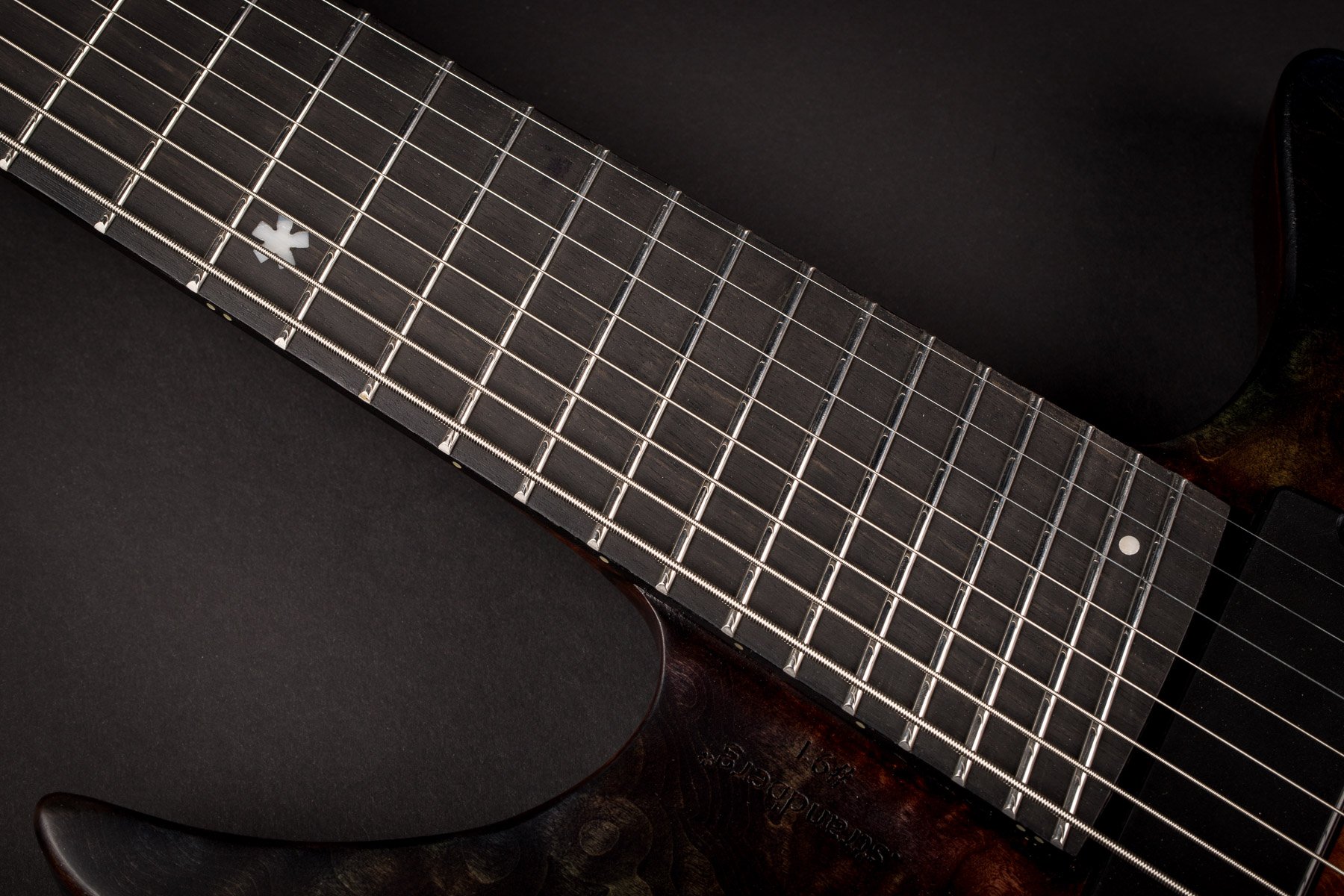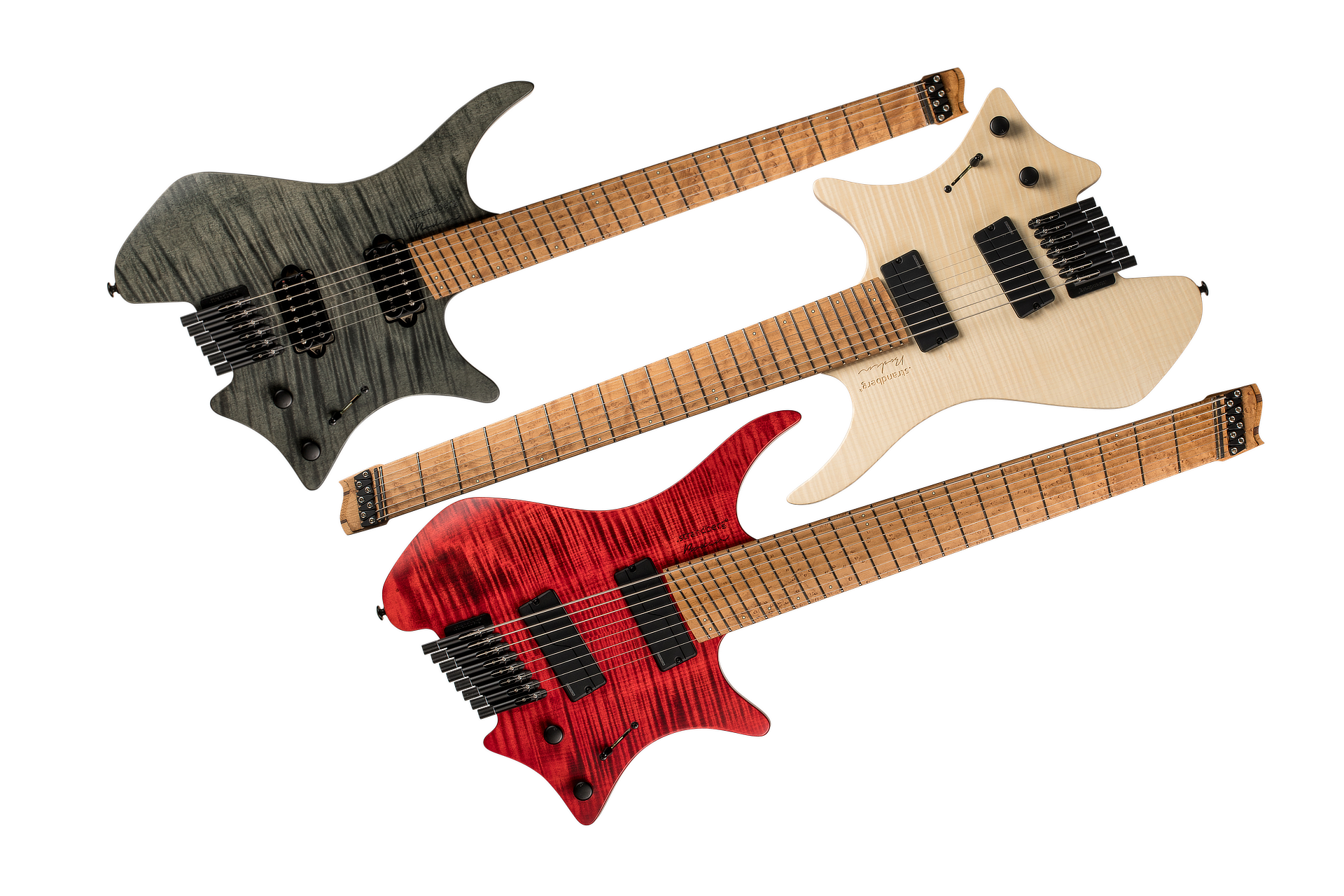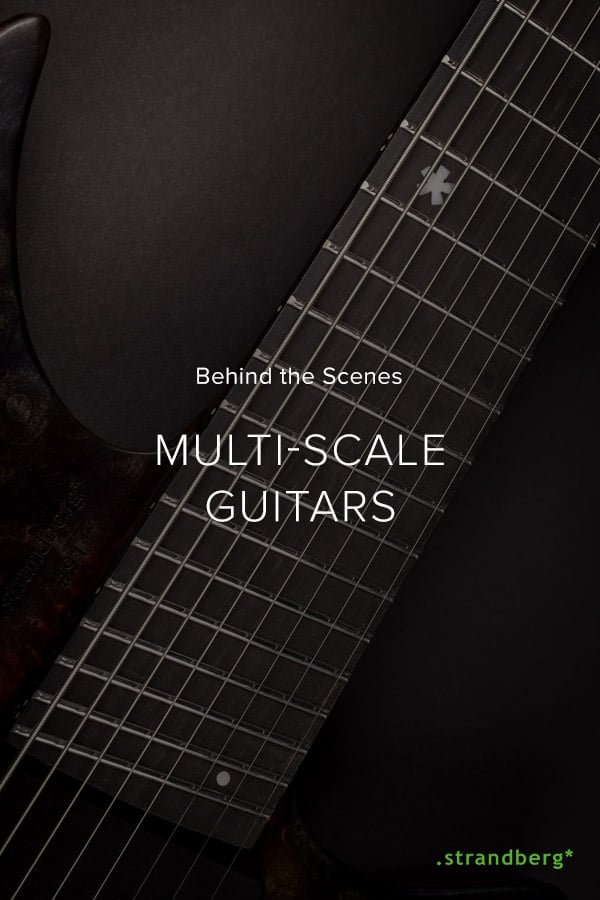Strings and Scales
As we all know, lower notes are produced by heavier gauge strings. And, generally speaking, the tone and intonation accuracy is improved the longer a string is. So when attempting to build an “Extended Range Guitar” that goes lower than a conventional guitar, a longer scale length has real tonal benefit. Most conventional 6-string electric guitars today use a 25.5″/648 mm scale length (e.g. Fender Strat) whereas some use 24.75″/629 mm (e.g. Gibson Les Paul) or a happy medium of 25″/635 mm (Paul Reed Smith). Typical string gauges range from .009″ – .042″ to .011″ – .056″ (there are both lighter and heavier gauge sets, of course). When tuned to standard EADGBE, the heavier gauge set will have a higher tension than the lighter gauge set, which improves tone, but makes bending more difficult.The Problem
But when drop tuning the E string to D or even C, it can become quite loose and not ring as well. And when adding a 7th or even 8th string tuned to B or A and F# or E respectively, it is almost impossible to get a good tone, intonation and string tension on a 25.5″ scale length. The solution is to increase the scale length – often to 27″, but this comes at the expense of a high E with even a light gauge of .009″ becoming quite stiff and hard to bend.

The Solution
The solution is to create a multi-scale instrument, where each string has its own scale length. For example, our Boden 8-string has a scale ranging from 28″ for the 8th string, and 26.5″ for the 1st. Using a .084″ gauge string, you can get excellent tone even when drop tuning the 8th string to E and with even a .010″ 1st string, it is possible to bend with reasonable comfort. To accomplish this, the frets are laid out in a fanned manner. Luthier Ralph Novak filed a patent for this in 1989 (now expired) but still has the rights of the trademarked term “Fanned-Fret”. The original design literature describes many tonal benefits from a multi-scale design, but we will focus on ergonomics and the tonal aspects listed above.

So, why not 28″ – 25.5″? This would create better comfort for bending the higher notes. The answer lies in ergonomics. The 28″ – 26.5″ range provides great tone, and at the same time excellent ergonomics. When laying out the fan of the frets, there is a neutral point somewhere on the scale. When we at Strandberg Guitars work with a client, we will determine which scale lengths work best for the tone that is sought, but also where the neutral point ends up, based on the size and playing style of the player. The original Boden 8 was built for Tosin Abasi (Animals as Leaders) and we determined that the neutral point was best placed near the 7th fret. This way, the layout of the frets accommodate the “windshield wiper type” motion that the arm makes when moving up and down the neck. Any other relationship between the scale lengths or any other neutral point would impact the comfort of playing.

So to summarize:
- A multi-scale instrument has the frets laid out in a fanned manner to allow different scale lengths for each string.
- When laying out the fan, there will be a neutral point somewhere, where the fret is largely perpendicular to the strings.
- Lower notes generally sound and intonate better on a longer string with higher tension.
- To make it easier to bend the higher notes, a shorter scale length is preferred, and tone/intonation does not have the same impact.
- The scale lengths and the neutral point need to be chosen not just for tone, but also for ergonomics and playability.
The scale lengths/neutral points we have chosen for .strandberg* guitars are as follows:
| Guitar | Scale lengths | Neutral point | Original client |
| Boden 6 | 25.5″ – 25″ | 0 | Ola Strandberg |
| Boden 7 | 25.75″ – 25″ | 5 | Misha Mansoor |
| Boden CL7/OS7 | 26.25″ – 25.5″ | 9 | Chris Letchford |
| Boden 8 | 28″ – 26.5″ | 7 | Tosin Abasi |

Pin this image to save this article.














Share this: